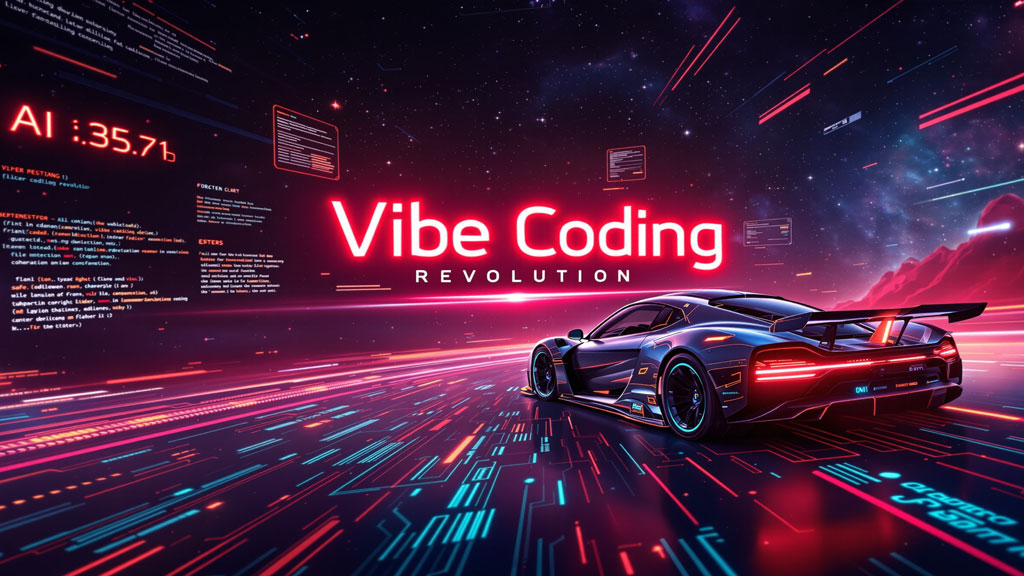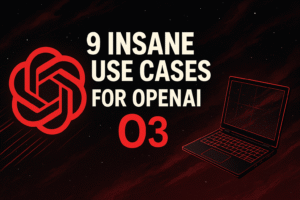Vibe Coding in Action
What is Vibe Coding?
At its core, Vibe Coding is about collaboration between humans and AI. Instead of manually writing every line of code, developers use AI tools to generate, refine, and troubleshoot code. This approach allows for rapid prototyping and experimentation, making it ideal for creative projects like games, apps, and even automation tools.
Peter Levels, a pioneer in this space, has demonstrated the power of Vibe Coding by creating complex games with minimal effort. Using tools like Claude 3.5 and Cursor, he has built everything from cockpit displays to multiplayer functionalities. His success has inspired others to explore the potential of AI-assisted coding.
For beginners, platforms like Claude and OpenAI offer accessible entry points. With simple prompts like “Build me a 3D racing game,” users can create functional prototypes in minutes. This ease of use is attracting a new wave of creators, from students to hobbyists, who might not have traditional coding skills.
The Benefits of Vibe Coding
- Accessibility: Vibe Coding lowers the barrier to entry, allowing anyone with an idea to create software. This democratization is similar to how digital cameras revolutionized photography, enabling amateurs to produce professional-quality images.
- Efficiency: AI tools can handle repetitive tasks, freeing developers to focus on higher-level design and problem-solving. This can significantly speed up the development process.
- Creativity: By automating the technical aspects of coding, Vibe Coding allows creators to experiment and iterate more freely. This has led to innovative projects like AI-generated games and interactive applications.
For more on how AI is empowering creators, read How to Get Bolt New for Free and Bolt New Fork: Revolutionizes AI-Powered Full-Stack Development.
The Challenges of Vibe Coding
While Vibe Coding offers numerous advantages, it also faces criticism and challenges:
- Quality Concerns: Critics argue that AI-generated code often lacks the sophistication and reliability of manually written code. As Jonathan Blow, a respected game developer, points out, creating a functional prototype is easy, but building a polished, playable game requires deep expertise.
- Security Risks: AI tools can inadvertently introduce vulnerabilities, such as exposing API keys or creating exploitable code. Developers must remain vigilant and use tools like GitHub for version control and security.
- Resistance from Professionals: Some experienced developers view Vibe Coding as a threat to their craft, likening it to the rise of digital cameras in the 1990s. However, history shows that new technologies often coexist with traditional methods, enhancing rather than replacing them.
For insights into the broader implications of AI, check out Inflection AI Billion Fundraising and Anthropic Computer Use Demo: Claude AI Beginner’s Guide.
The Future of Vibe Coding
The potential of Vibe Coding extends far beyond game development. As AI tools become more advanced, they could revolutionize industries like marketing, education, and healthcare. Imagine a world where anyone can create custom software to automate tasks, analyze data, or enhance user experiences.
This shift could also lead to the rise of “time-rich” developers—students, hobbyists, and everyday users who create software for personal or niche applications. Just as smartphones have turned everyone into a photographer, Vibe Coding could make software development a universal skill.
For a glimpse into how AI is transforming other fields, explore How to Do Local Marketing with TikTok and AI in OnlyFans Content Marketing.
Conclusion: Embracing the Vibe Coding Revolution
Vibe Coding is more than a trend—it’s a paradigm shift in how we approach software development. By leveraging AI tools, creators can bring their ideas to life faster and more efficiently than ever before. While challenges remain, the potential benefits far outweigh the drawbacks.
Whether you’re a seasoned developer or a curious beginner, now is the time to explore Vibe Coding. Start by experimenting with tools like Claude or Cursor, and don’t be afraid to make mistakes. The learning process is part of the journey, and the resources available today make it easier than ever to get started.
For those interested in diving deeper, check out OpenAI Canvas: Coding AI Marketing and Why You Should Start Digital Content Marketing. These guides offer valuable insights into how AI is reshaping industries and creating new opportunities.
As we look to the future, one thing is clear: Vibe Coding is here to stay. It won’t replace professional developers, but it will empower a new generation of creators to innovate and experiment. Just as digital cameras democratized photography, Vibe Coding is democratizing software development.
So, what are you waiting for? Dive into the world of Vibe Coding and see where your creativity takes you. Let us know your thoughts in the comments below, and don’t forget to share your projects and experiences. The future of software development is in your hands.







